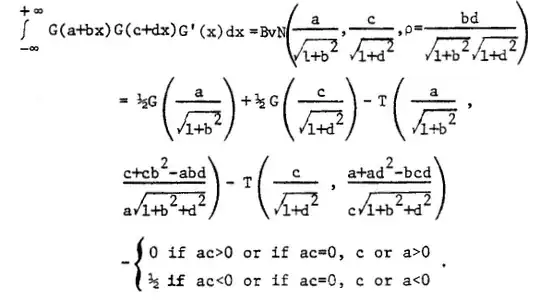I'm trying to calculate: $$\int\Phi((x-\mu_{1})/\sigma_{1})*\Phi((x-\mu_{2})/\sigma_{2})*\phi(x)dx$$ where $\Phi$ and $\phi$ are the standard normal cumulative distribution function and probability density function, respectively.
The reason I'm trying to do this is that I want to use truncated variational posteriors in a variational inference model and I need to find out the normalizing constant for the combination of a normal with a differential approximation of a step function.
There is some stuff calculating $E[\Phi((x-b)/a)]$ here on Math Overflow. However, I need two truncation terms and not just one. I can't think how to extend the proof given in the link to two normal CDFs. I've tried writing $N(\mu,\sigma)$ as $\mu + \sigma*N(0,1)$ for the CDFs and doing u substitution but that seems to not work (I get infinities usually). Any help would be appreciated. Thanks!
